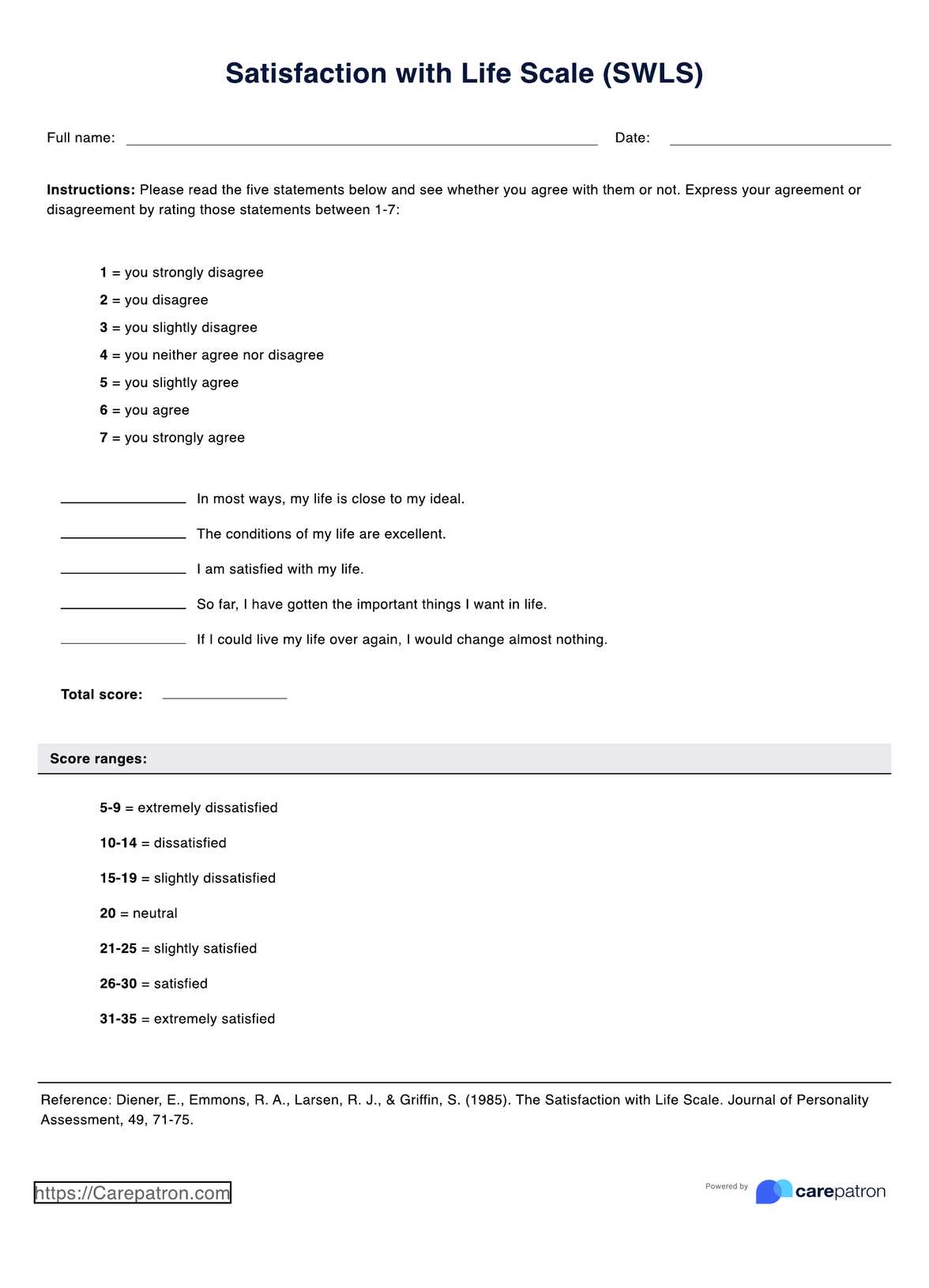Once in a while. Usually, these are used once to gauge a client’s satisfaction and dissatisfaction with their life. The way they rate themselves should help drive discussions moving forward. But these can be reissued to monitor how they’ve been doing and if things look up for them.

Satisfaction with Life Scale (SWLS)
Use the Satisfaction with Life Scale (SWLS) for your counseling practice to see if your client is satisfied or dissatisfied with their life in its entirety or when it comes to some aspects of their life!
Satisfaction with Life Scale (SWLS) Template
Commonly asked questions
Not initially. This scale was created to assess the level of satisfaction/dissatisfaction that a client has when it comes to their life. This will help find opportunities to determine the factors that contribute to a client’s dissatisfaction to further discussions for subsequent appointments.
However, it can be used to determine what changes can be made to a care plan. If you’ve already created a plan for the client, you can use this scale again to check on them. If they score low, that might indicate that an aspect of your plan might not be working. The scale might help you determine the adjustments you need. This is not a guarantee, though. It’s mainly there to offer perspective.
The ratings will be given by your client, so it’s based on their experiences. That means it’s subjective, and you will be relying on how they’ve rated themselves. The scale does create a semblance of objectivity, though. By assigning designations to score ranges, it gives you something to work with. What you will be doing moving forward will be based on the score range your client’s score will fall under.
EHR and practice management software
Get started for free
*No credit card required
Free
$0/usd
Unlimited clients
Telehealth
1GB of storage
Client portal text
Automated billing and online payments











